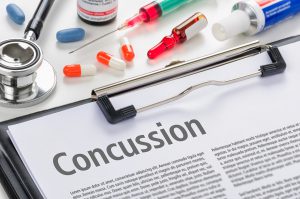Breaking Down The 3 Different Types Of Concussions
 Michael Babboni
Personal Injury
Motorcycle accidents, car accidents, and especially slip and falls are big contributors to traumatic brain injuries. Concussions are a common type of traumatic brain injury, and one that can be the result of any type of personal injury accident. When one hits their head, and the brain jostles against the skull, a concussion may occur, and these can have lasting effects.
Michael Babboni
Personal Injury
Motorcycle accidents, car accidents, and especially slip and falls are big contributors to traumatic brain injuries. Concussions are a common type of traumatic brain injury, and one that can be the result of any type of personal injury accident. When one hits their head, and the brain jostles against the skull, a concussion may occur, and these can have lasting effects.Concussions are graded into 3 basic categories and labeled grade 1, grade 2, and grade 3. A grade 1 concussion is the mildest type, while grade 3 is considered the most serious.
Grade 1 Concussions
A grade 1 concussion is the least serious type, but that doesn’t mean it doesn’t have unpleasant or lasting consequences. After a slip and fall where a person hits their head, they may experience a grade 1 concussion without even realizing it, showing the importance of being checked by a medical professional even when one thinks medical attention is unnecessary.
During a grade 1 concussion, a person will likely not lose consciousness, or only lose consciousness for a period of a couple of seconds as they “see stars” and shake off the fog quickly. Typically the symptoms of a concussion, like dizziness and head pain, will last for less than 15 minutes and quickly subside. While grade 1 concussions seem like no big deal, they can leave lasting injuries that lay dormant without medical attention.
Grade 2 Concussions
Grade 2 concussions are quite similar to grade 1, but the symptoms associated with the concussion will last longer than 15 minutes. Consciousness may be lost for a period of less than a minute, but may not be lost at all. After the head bump happens, the symptoms associated with a concussion will last longer than 15 minutes and perhaps be more severe than one would experience with a grade 1.
The symptoms associated with a grade 2 concussion may include dizziness, nausea, headache, brain fog, or ringing in the ears. Medical attention should be sought to ensure that the concussion has not caused any more serious underlying injuries or damage.
Grade 3 Concussions
During a grade 3 concussion, a person will lose consciousness for a period of seconds, to minutes, to even longer in the most serious cases. The symptoms associated with grade 3 concussions can be lasting and difficult, including dizziness, nausea, headache, ringing in the ears, balance issues, and even lasting cognitive difficulties. With grade 3 concussions, a person’s life can be changed in an instant, and medical attention should be swift and complete to potentially limit long-term traumatic brain injury consequences.
With grade 3 concussions, the recovery process can be complex. While a person may experience certain symptoms at the time of the concussion, and get over those symptoms, different symptoms may set in later on that seem unrelated to the concussion incident. As the brain heals, changes can begin to occur, leading to an ever-changing state the injured person can do little about.
Determining The Grade Of Your Concussion
The grade of a concussion can only be determined by a medical professional, and medical providers can then tell a person what they can experience as they recover from their concussion experience. Due to the sensitive nature of concussions and traumatic brain injuries as a whole, the assistance of a personal injury attorney after an accident causing a traumatic brain injury is paramount.
If you’ve experienced a concussion due to a slip and fall, a motorcycle accident, a car accident, or a defective product accident, contact us at TheStPeteLawyer.com today.
